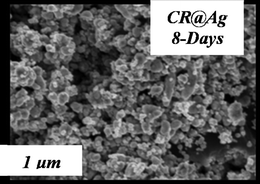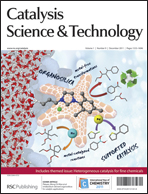Activated organically doped silver: enhanced catalysis of methanol oxidation
Abstract
Detailed study of the synthesis parameters of silver doped with the organic dye Congo-red (CR@Ag) have led to an understanding of the origins of the superior performance of this novel-type methanol-oxidation catalyst (compared to pure silver) as demonstrated by the significant lowering of the temperature needed to reach maximal conversion by more than 100 °C. The origins of the effect of the organic dopant on the catalytic properties of silver are suggested and discussed in terms of its effects on morphology, on oxygen chemisorption properties, on the surface area, on the thermal behavior and on the sinterability of the silver aggregated crystallites. For instance, the organic dopant affects the surface area dramatically, increasing it from 600–3000 cm2 g−1 for undoped silver to 46 000 cm2 g−1 for CR@Ag; and oxygen chemisorption, crucial for this catalytic process, increases from 32 cm2 g−1 for Ag to 893 cm2 g−1 for CR@Ag. Preliminary work with CR@copper provides a positive outlook for the general use of organic dopants to improve catalytic properties of other metals.

- This article is part of the themed collection: Heterogeneous catalysis for fine chemicals

 Please wait while we load your content...
Please wait while we load your content...